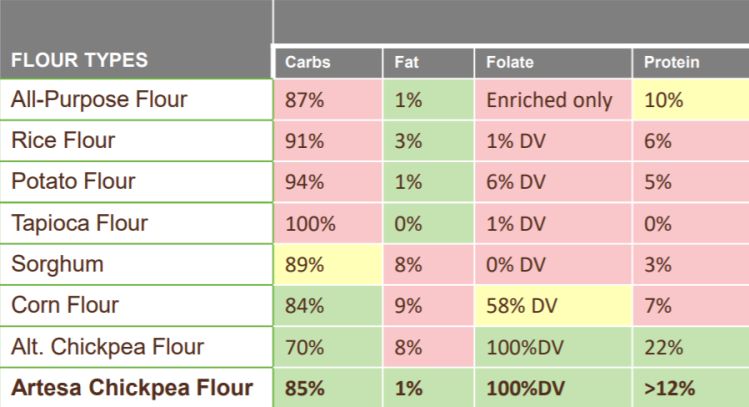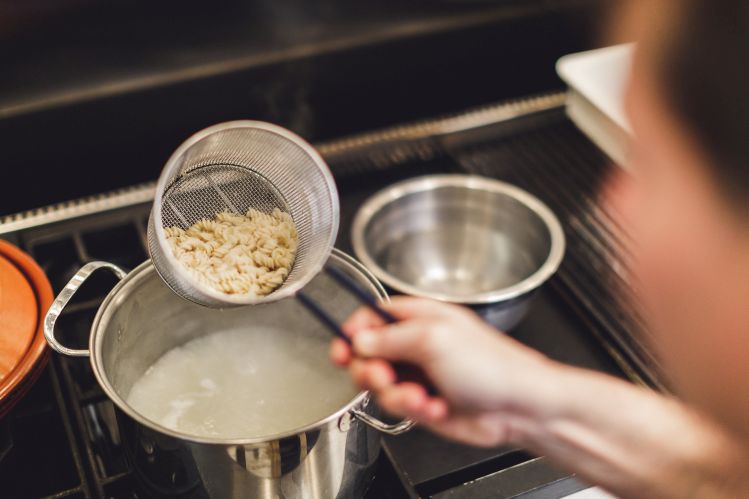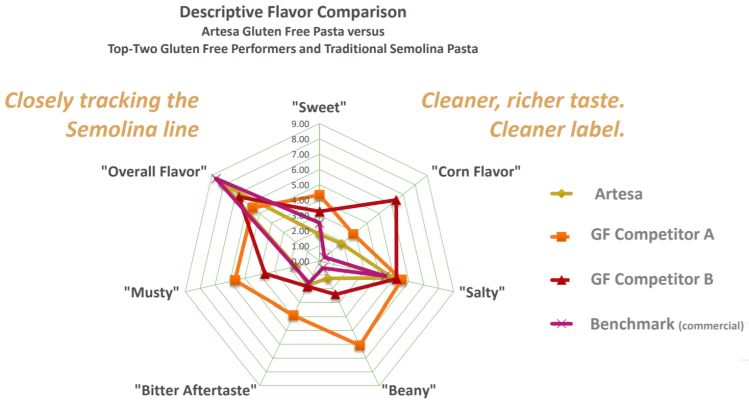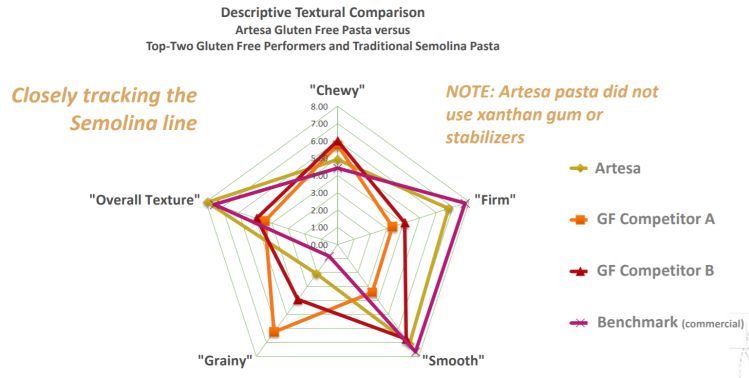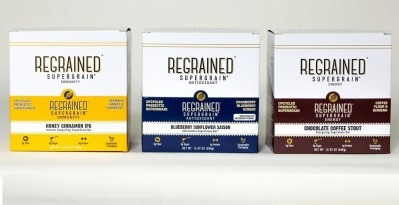New multifunctional chickpea flour billed as game changer for gluten-free formulation

artesa chickpea flour – which will be followed later this year by chickpea protein concentrates – was developed by Virginia-based Nutriati, and is being marketed by New Jersey-based healthy ingredients specialist PLT Health Solutions, an early investor in Nutriati, and the exclusive sales and marketing partner for artesa.
While chickpea flour is not new, commercially available products can have a “musty, beany or bitter” flavor and yellow color, a gritty texture and require the addition of gums, starches and other ingredients to mimic the functional properties of wheat flour, Nutriati co-founder Michael Spinelli told FoodNavigator-USA.
By contrast, artesa chickpea flour – which contains 12-15% protein (higher than rice, potato, tapioca, corn and sorghum - which vary from 0-7%) and 1% fat (far less than regular chickpea flour) – has a very fine, flour-like particle size, a white color, good oil and water binding properties for products such as soup, sauces and gravies, and excellent functional formulating characteristics, he claimed. (Chickpeas contain 18-21% protein, some of which Nutriati uses to make its protein concentrates.)
“We remove nearly all of the oil [chickpeas contain 7-9% oil; artesa has 1%], which is the part containing those volatile aromatic compounds, so we can eliminate the negative flavor components. We then very finely mill the chickpeas and modify the texture in a way that’s unique, so you could have a chickpea pasta without using xanthan gum, and gluten-free breads and baked goods with more fiber, protein and resistant starch without the additives. So you can clean up your label. Because artesa lacks the oil, it’s also more stable [than a standard chickpea flour].
“We’re offering gluten-free without compromise,” added Spinelli, a food R&D veteran who rose up the ranks at Ben & Jerry’s and chickpea-fueled brand Sabra, and teamed up with Altria exec Richard Kelly to form Nutriati in late 2013.
“The functionality you get from the protein and the oligosaccharides combined with water in something like a pizza dough gives you the elasticity and stretchy ‘memory’ you need in this kind of application, and mimics what wheat gluten does, so you’re not adding milk or egg protein, modified starch or gums. We can also create gluten free breads that don’t tear when you spread butter on them.”
Pulse crops such as chickpeas draw nitrogen directly from the atmosphere, so farmers do not have to buy large amounts of nitrogen fertiliser in order to grow them. They are also a very efficient source of protein in environmental terms, requiring far less energy and water, and fewer pesticides than rival protein sources. Chickpeas are also non-allergenic and non-GMO.
Low in fat and low GI, artesa provides a good source of protein (>12%) and adds fiber, resistant starch (twice the amount found in rice), vitamins (including 100% DV of folate) and other nutrients, added Spinelli, who said Nutriati had raised an initial 750k, followed by $1.5m from NRV before closing its latest, $8m, funding round last year.*
“But it goes way beyond gluten free. If you use it in a traditional tomato bisque instead of modified starch or heavy cream, you can take out a third of the fat, reduce the saturated fat and calories and add fiber and protein.
“We’ve also made some chickpea French fries with 10g protein and 4g fiber per serving,” said Spinelli, who said Nutriati is also looking at applying its technology to other crops in order to build a broader platform of products further down the line.
Steve Fink, director of marketing, PLT Health Solutions, added: “If you think about the size of the prize, it’s an interesting question. Gluten-free is the clearest initial market opportunity, but above and beyond that, artesa can be used for fat and dairy replacement in soups, sauces and dressings, and to add protein and resistant starch to pizzas, beverages, baked goods and pastas. There are also completely novel applications.”
* The latest $8m funding round was supported by London-based Tate & Lyle Ventures, L.A-based PowerPlant Ventures, Virginia-based New Richmond Ventures (NRV), and San Francisco-based Blueberry Ventures.
Fast-growing brands such as Banza (chickpea pasta), neat (egg replacers, meat analogs and baking mixes) and Rule Breaker (chickpea brownies) have been waxing lyrical about the technical as well as nutritional properties of chickpeas for some time, while a growing number of brands from The Good Bean and Biena Foods to Hippeas now use chickpeas in snacks.
According to Innova Market Insights, there has been a steady increase in the number of global new product launches featuring chickpeas in recent years: "Tracked product launches featuring chickpea flour have more than trebled from 2012 to 2017, as new application areas have opened up.”
However, chickpea protein is still relatively unknown to food formulators as it’s not produced on a commercial scale by any of the major players in plant proteins, despite the fact that chickpeas are very widely grown and relatively cheap compared to some other potential new sources of plant-based protein. Chickpea flour is more common, but commercial varieties lack the functionality of new kid on the block, artesa, claim partners Nutriati and PLT Health Solutions.

